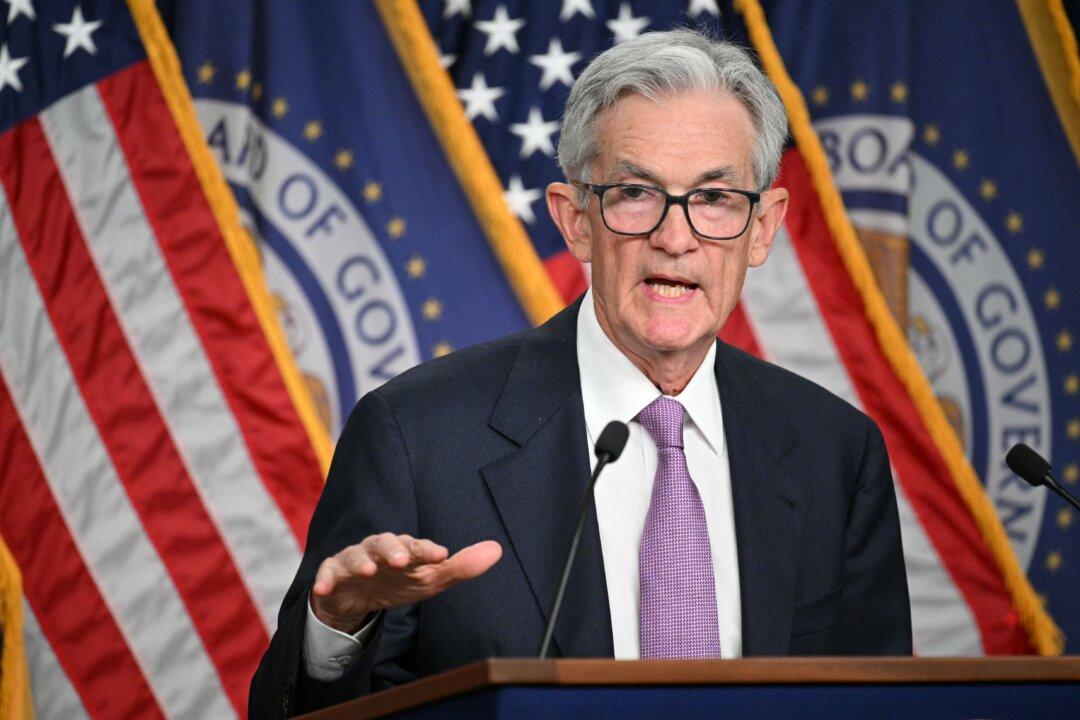Federal Reserve Chair Jerome Powell dismissed allegations that the central bank’s first interest rate cut since March 2020 will affect the presidential election in November.
Speaking to reporters at the post-meeting press conference, Powell was asked about the timing of the rate cut, which came less than 50 days before voters head to the ballot box, and whether it has political motivations.
“This is my fourth presidential election at the Fed, and it’s always the same. We’re always going into this meeting in particular and asking what’s the right thing to do for the people we serve?” Powell said. “And we do that and we make a decision as a group, and then we announce it. And it’s—that’s always what it is; it’s never about anything else.”
Powell said that the things the Fed does “really affect economic conditions for the most part with a lag,” and that if the Fed loosens monetary policy conditions correctly, these actions will “benefit the American people significantly.”
Conventional economic wisdom suggests that monetary policy functions with a long and variable lag, a concept derived from Milton Friedman’s research and literature. This means that the effects of Fed policy actions might not be seen instantly, though the subject has been debated in recent years.
Leading up to the long-awaited rate reduction, Powell repeatedly said in news conferences and interviews that the central bank does not consider elections or politics in its decision-making, referencing the institution’s independence.
The Fed’s rate cut announcement captured attention in Washington.
Vice President Kamala Harris said the Fed policy pivot was “welcome news for Americans who have borne the brunt of high prices.”
Some lawmakers also shared their thoughts.

Federal Reserve, Elections
This is not the first time the Fed has raised or lowered interest rates ahead of an election.While the effects of up or down movements in the policy rate may not be witnessed for several months—or a few years—some White House incumbents have encouraged the Fed to pause rate hikes or initiate a series of cuts heading into an election.
More recently, Trump and Biden have weighed in on Fed policy during their terms in office.
In the run-up to the December Fed policy meeting, monetary officials indicated they were not thinking about rate cuts. However, the institution signaled three rate cuts in 2024.
Trump has been a vocal critic of the Federal Reserve, both in his first term and on the 2024 campaign trail.
‘Long, Variable Lags’
Central banking operates on the decades-old premise of long and variable lags because, for example, many marketplace transactions are based on prices and volumes agreed upon months in advance. While there is no rule of thumb, adjustments to policy may not be experienced for as long as 24 months, according to a blog post from the St. Louis Fed.Economists and even Fed officials have started to take another look at the concept.
Fed Gov. Christopher Waller recently said that lags might be shorter than previously thought. Citing the central bank’s forward guidance, which was not the routine procedure before the early 2000s, Waller estimated that monetary policy effects could be viewed in as little as nine months.
Waller said that when sizable shocks occur, whether in the wider economy or on policy, there will be a rapid response.
“Big changes in policy rates will tend to cause more rapid changes in behavior, which implies monetary policy lags will be shorter when changes to the policy rate are large and rapid,” he said.
With a vast dashboard of daily, weekly, and monthly economic and financial indicators, markets and consumers can guess at monetary policy well in advance.
Bond markets started pricing in rate cuts this past spring, with the benchmark 10-year Treasury yield sliding by 100 basis points to 3.74 percent.
As for stocks, traders will instantly respond to rate cuts.
One day after the Fed’s Sept. 18 rate cut, the leading benchmark indexes rallied by as much as 2.6 percent.
According to stock market numbers put together by the Chase Investment Council, the S&P 500 has delivered sizable one-year returns after the Fed’s first rate cut.







